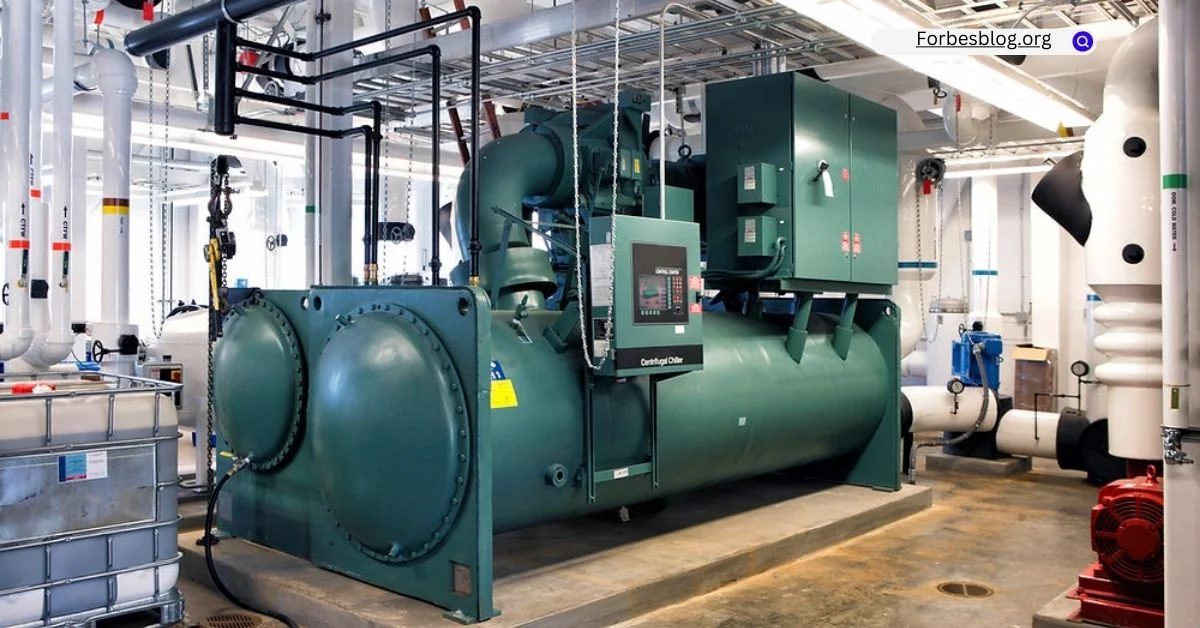Table of Contents
Routine maintenance
Routine maintenance of a machine means regularly conducting routine assessments to realize any potential malfunctions early enough before the machine breaks down. It usually involves:
- Looking for malfunctions
- Looking for solutions
- Cleaning the chiller.
When maintaining the chiller make sure that:
- The chiller is operating optimally
- The machine is functioning safely
- The electricity and fuel use are optimal
- The machinery has a longer life.
While carrying your chiller machines’ routine maintenance, permission needs to be granted to access the machine. For safety purposes the following gear has to be worn:
- Gloves
- Helmet
- Safety boots
- Safety glasses
It is important to understand that a chiller machine is used to generate cold water. It converts normal temperature water and cools it down to cold water. The cold water is used in the production process as well as cooling down industrial machines.
Conducting routine maintenance prolongs the life of a chiller machine and reduces the chances of breakdowns. The routine maintenance is performed on:
- Time-based scheme
- Usage-based scheme
Time-based maintenance is performed based on the calendar. It is also referred to as periodic maintenance. It is done at specific time intervals despite the chiller machines’ condition. A good example is carrying out routine maintenance at the beginning of the month or after every four months. These checkups are done in advance hence performing preventive maintenance.
Usage-based maintenance is performed when the machine usage reaches a certain level. This involves planned maintenance. An example is a routine-based maintenance on a motorbike after every 500km. This kind of maintenance makes it hard to make a forecast of when the next maintenance will be done.
Small malfunctions can be ignored but they become major problems in the future if left unattended. It can lead to expensive and time-intensive repairs. Such minor defects should be repaired before they cause major problems.
Some factors cannot be constant in chiller machines such as energy consumption, pressure, temperature, etc. The readings depend on environmental conditions. If the room temperature is maintained it can be assumed that the chiller system is operating optimally. However, this can be a dangerous assumption since a faulty chiller can still maintain room temperature with a low cooling load. Therefore, regular inspection of the chiller is mandatory and repairs should be conducted accordingly.
If the chiller system is not properly maintained, it causes it to work harder increasing the use of energy. Chiller units consume high amounts of energy and saving power is an important thing in any organization.
Visual inspection
This kind of inspection is the most basic and among the oldest kind of inspection. The equipment is inspected with naked eyes. No tool is needed for inspection. You can be able to see dirt, foreign material, scratches, and other visible defects.
Inspecting chiller machines is more cost-effective as compared to other methods of inspection. The technician makes rounds and visually inspects all the machines including the chiller system. A well-versed technician can see many problems during the inspection. Some defects are checked like:
- Vibrations
- Cleanliness
- Leaks
- Tightness
- Noise
Visual inspection involves other factors than these.
Noise and vibrations
These two are related and are checked simultaneously. Vibration causes noise and some technicians deal with the noise by using soundproofing. However, this is not the best method since it does not solve the problem. Noise and vibrations are common even in well-maintained chillers. The reason for this is because the chiller consists of various moving parts but excessive vibration can cause other problems as well.
Vibration is the movement of parts of a machine and eliminating it is impossible but can still be reduced to undamaging levels. You need to use the best practices to reduce vibration such as routine maintenance. Spring mounts or damping pads can be installed in chiller machines to minimize vibration. The levels of vibration should be at minimum levels to prolong the durability of the machine.
The main culprits of noise in chiller machines are compressors. They generate noise based on:
- The load
- Type and size of the compressor
The less noisy types of compressors are centrifugal, screw, reciprocating, and scroll.
The second culprits for noise are condenser fans in the chillers. Condenser fans cause lots of air movement. Water-cooled chillers make less noise due to the lack of condenser fans.
Cleanliness
Ensure the surrounding area of the chiller system is clean. Chiller systems must be clean if they are dirty. Cleaning the chiller machines regularly lowers operation costs and prolongs the durability of the chiller machine.
Leaks
If you notice oil and water traces in the chiller system it is most likely the leakage point. Some places to check for leakage are piping joints, valve caps, and brazed fittings.
Tightness
Ensure that the mechanical and electrical connections are tightened and safe. The inspection should involve mechanical and electrical components. Make sure that the screws, bolts, and nuts are tightened to hold the water in the chiller system without leaks.
Compressor maintenance
The main function of a compressor is to add more pressure to the refrigerant. They consume a lot of energy. Earthing involves the transfer of electric current to the earth using a conductible wire. Safety is guaranteed when excess electricity is directed to the earth. Earthing protects electrical equipment and the operator from a shock.
The earthing wire in the compressor is the yellow and green wire. The earthing is inspected by a digital multimeter. One lead is connected to the copper tube while the other is connected to the earth wire. If the compressor is connected to the earth wire it shows infinite or minimal resistance. The optimal resistance value is lower than 0.5 ohms.
The oil in the compressor is transparent and clear. The color is maintained during the operation of the chiller. There will be no need of changing the oil for more than 3 years. The oil changes to a dark color if exposed to high temperatures or impurities.
In summary the routine maintenance for chillers is a very complex endeavor and needs to be performed by highly qualified technicians. The chiller system is an important equipment in the production process and its breakdown affects almost every aspect of the production process. Chiller maintenance is a very broad topic since the equipment is composed of many parts. However, the point is that applying preventive maintenance to the chiller system goes a long way in saving an organisation additional expenses rather than relying on reactive maintenance.
Visit for more articles: forbesblog.org






